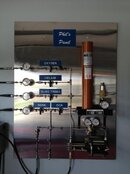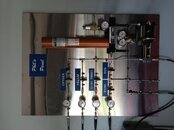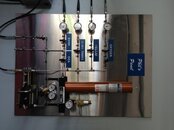SCUBA_Phil
Contributor
Question for the group. I have bought some Swagelok SS-43GS4 ball valves for my panel. They are rated for 3000 PSI. I have disassembled them, O2 cleaned them (ultrasonic) and then used a little Christo Lube MCG 111 during reassemble. After reassembly, I integrated them into my new panel. When leak checking, I had the pressure at 3000 psi, opened and closed them a few times. Now if I close the ball valve and then close the whip valve and wait for ~ 5 minutes, I find that the about ~5 psi of pressure when I reopen the whip valve. Is this normal behavior? One other question, how high can these valves go?
Thanks
Thanks






